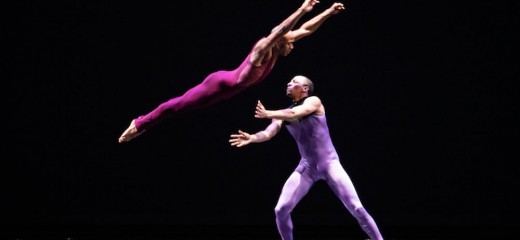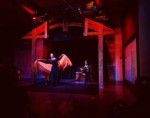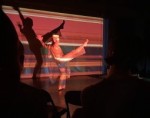
Trailblazers
by Annielille “Ani” Gavino
Artists gathered to celebrate a momentous celebration, the 32nd annual convening of the International Association of Blacks in Dance (IABD), in partnership with Philadanco! The Philadelphia Dance Company. Titled THEN NOW NEXT, the festival celebrated legendary and emerging black dance companies from around the country—looking at Black dance THEN, championing the narrative NOW, and cultivating opportunities for what is NEXT.
This conference and festival began in 1988 when Joan Myers Brown, Artistic Director of Philadanco, envisioned a platform for black artists to convene, network, and celebrate each other. She received an artist grant from the Pew Charitable Trusts, which helped jumpstart this vision. IABD garnered merely 80 attendees that first year. Today, a pool of 1,100 artists, including scholars, choreographers, students, teachers, directors, agents and administrators registered for IABD 2020.
On January 18, the IABD commemorated the milestone with Trailblazers, a culminating performance that featured astounding performances by IABD's five internationally-renowned founding companies—Cleo Parker Robinson Dance, Dallas Black Dance Theatre, Dayton Contemporary Dance Company, Lula Washington Dance Theatre, and Philadanco!—along with acclaimed special guests including Alvin Ailey American Dance Theater, Dance Theatre of Harlem, Forces of Nature Dance Theatre, Ronald K. Brown/Evidence, and Urban Bush Women.
The show began with Forces of Nature performing Memorial T “19,” choreographed by Abdel R. Salaam. Using a hybridity of African and American modern dance styles, dancers dressed in all-white costumes held lit candles and conveyed a devotional dance to Obatala. The mask of Egun was held by a dancer center-stage. Names of influential Black artists who are no longer with us and have joined the ancestors were voiced in the audio recording—Donald McKayle, Fred Benjamin, Chuck Davis, Katherine Dunham, Dudley Williams, Theodore Jamison, and many more. It was also a beautiful way to invite their spirits into the world of IABD 2020.
Cleo Parker Robinson Dance (CPRD) performed a work by Micaela Taylor, Resist. In suit jackets, dress pants and socks, dancers gestured in a robotic and disjointed fashion to non-harmonic sounds. They shifted across the stage, seemingly wanting to break free but unable to. A jarring transition of music occurred as the dancers suddenly jumped to the music of the Wild Cherry Band. With this recognizable popular funk music, they moved fluidly and distally, using urban dance vernacular. Dancer Jasmine Francisco mouthed the lines of the song, "Play that funky music white boy." Then the piece abruptly ended. Some audience members found the work unfinished. However, I think this was a great compositional choice that made me question: who are those who can move freely in space? How are movement and music a site for memory, and who gets to claim this?
Later, I looked up the Wild Cherry Band and found that the band consisted of white musicians playing funk music, a music genre that originated from African American communities. I then wondered if that was part of the statement. As a former CPRD dancer, I am aware that the company's repertoire often promotes socio-political consciousness. Perhaps the use of pantsuits and the robotic gestures suggested the struggle to maneuver in a capitalist economic system. Perhaps it referred to the disenfranchisement of Black culture unless it is white enough to be embedded in the pop culture matrix. Whatever the intent may be, the work triggered the audience to talk and question during intermission, which I found remarkable.
Anthony Burrell’s work, Conglomerate, performed by Philadanco, had the stage’s cyclorama lit in red, as well as the costumes. Each female dancer evoked sensuality as they posed in a closed bevel position under a spotlight. In unison, men danced in a herculean fashion intermittently lifting one of the three female dancers. The work was exciting and a crowd-pleaser, but I found this contrast of femininity and masculinity too heteronormative.
Another crowd favorite was a performance by Alvin Ailey dancers Linda Celeste Sims and Glenn Allen Sims who executed The Winter in Lisbon, choreographed by Billy Wilson. Using Dizzy Gillespie's music, this real-life couple embodied the beauty of simplicity, maturity, and authentic romance.
Dallas Black Dance Theatre (DBDT) brought the audience to a standing ovation with the work Execution of a Sentiment by Darrel Grand Moultrie. The work exudes virtuosity, high speed, intricate floor work, and clarity of lines. Consistent and rigorous dance training is evident in every dancer's execution. As a former member of this company, I was proud to see the new generation of DBDT dancers elevate this legacy of excellence.
As a Filipino immigrant, I was introduced to American dance in fragments—there was classical modern dance, post-modern dance, and then, there was Black dance. I gravitated towards this so-called genre because of its mission: it historically originated when dance was not available to Black dancers and people of color. It was a movement that required dancers to tell stories and move with intentionality. Today, I conclude what black dance is to me: it is a history and legacy of American dance that ought to be recognized and cherished. Furthermore, it is with utmost joy that I write about this movement, and witness its transcendence on the Merriam Theater stage. Ase!
Trailblazers, International Association of Blacks in Dance, The Merriam Theater, January 18.
By Anito Gavino
February 12, 2020








